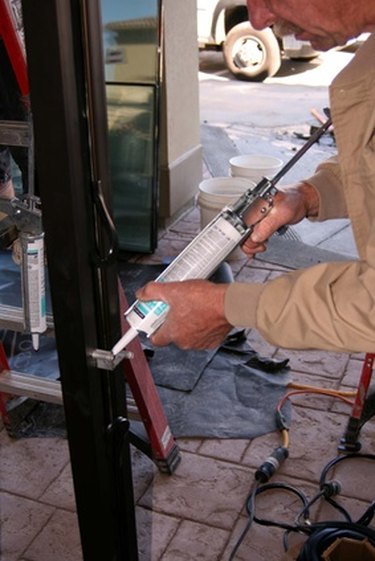
Caulk, which is used as indoor and outdoor sealant for tiles, stone, cracks, and corners, does not always remain its original color. Some are intentionally made to change hues, while others become discolored due to mold, dirt, extreme temperatures, and excess moisture.
Characteristics
Video of the Day
Caulk is sometimes made to change colors so the user will be able to tell when it is dry and therefore ready for sanding or painting. The wet caulk will be one color, and the final shade will only appear when it is completely dry.
Video of the Day
Indoor
A common problem for untreated caulk is that mold will turn it a brownish-green color. This is especially a problem in areas of the house with a lot of moisture, such as kitchens and bathrooms, or poorly ventilated areas. Some other causes for unwanted caulk color changes indoors are extremes of temperature (such as very cold conditions in garages) and other types of sealants placed over the caulk.
Outdoor
Wind, weather, dirt, and grease also have the potential to turn caulk different colors. After being exposed to the elements, white caulk often turns an unattractive shade of grayish-yellow. If aesthetics is a consideration, try using darker caulk colors for outdoor purposes.